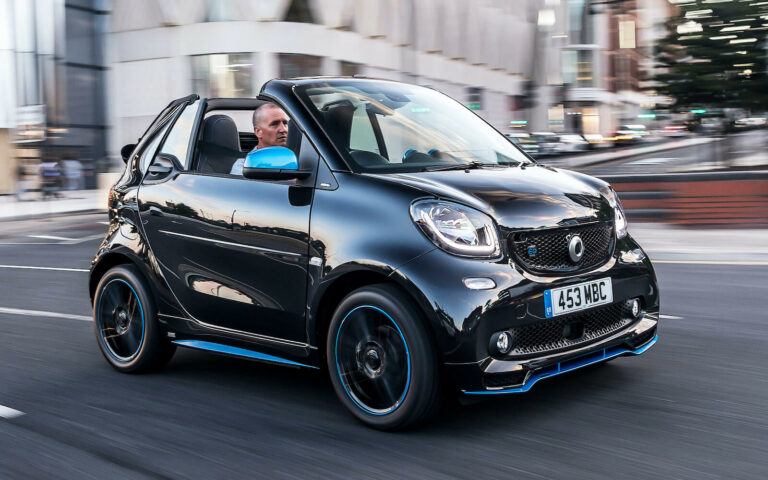What’s The Best Speaker Brand For Cars? Unveiling the Ultimate Audio Experience
What’s The Best Speaker Brand For Cars? Unveiling the Ultimate Audio Experience cars.truckstrend.com
In the symphony of daily life, few things rival the pleasure of a truly immersive audio experience, especially when you’re behind the wheel. For many car enthusiasts and casual drivers alike, the factory-installed sound system often falls short, leaving a yearning for richer bass, clearer highs, and a more dynamic soundstage. This desire naturally leads to the fundamental question: "What’s the best speaker brand for cars?"
The quest for the "best" is, however, a deeply personal journey. There isn’t a single, universally acclaimed champion, as "best" is subjective and depends entirely on your specific needs, budget, vehicle type, and listening preferences. This comprehensive guide will navigate the complex world of car audio, helping you understand the key factors, identify leading brands, and ultimately make an informed decision to elevate your in-car sound.
What’s The Best Speaker Brand For Cars? Unveiling the Ultimate Audio Experience
Understanding Car Audio Components: More Than Just Speakers
Before diving into specific brands, it’s crucial to understand that speakers are just one piece of the car audio puzzle. A truly excellent sound system is a harmonious integration of several components:
- Head Unit (Receiver): The brain of your system, controlling audio sources, equalization, and pre-amp outputs.
- Amplifier: Boosts the low-level audio signal from the head unit, providing the power speakers need to perform optimally.
- Speakers: Convert electrical signals into sound waves. These come in various types:
- Coaxial Speakers (Full-Range): All speaker elements (woofer, tweeter, sometimes a midrange) are combined into a single unit. Easy to install, good for general upgrades.
- Component Speakers: Separate woofers, tweeters, and external crossovers. Offer superior sound staging and clarity but require more complex installation.
- Subwoofers: Dedicated speakers designed to reproduce only low frequencies (bass).

- Sound Deadening: Materials applied to car panels to reduce vibrations, road noise, and improve speaker performance by creating a more acoustically inert environment.
Understanding this ecosystem helps you realize that even the "best" speakers won’t sound their best without adequate power and a proper installation environment.
Key Factors to Consider When Choosing Car Speakers
Selecting the right speakers involves balancing several technical specifications with your personal preferences.
-
Sound Quality Preference:
- Clarity & Detail: Do you prioritize crisp highs and clear vocals?
- Bass Response: Are you a bass-head who loves deep, impactful lows?
- Overall Balance: Do you prefer a natural, well-balanced sound across all frequencies?
- Soundstage: Do you want the feeling that instruments are positioned precisely around you? (Component speakers excel here).
-
Power Handling (RMS vs. Peak):
- RMS (Root Mean Square) Power: This is the continuous power a speaker can handle reliably over time. Always prioritize RMS.
- Peak Power: The maximum power a speaker can handle for very short bursts. Less critical for sustained performance.
- Actionable Insight: Match the speaker’s RMS power handling to your amplifier’s RMS output for optimal performance and longevity. Overpowering or underpowering can damage speakers or lead to poor sound.
-
Sensitivity (dB):
- Measures how efficiently a speaker converts power into sound. Higher sensitivity (e.g., 90dB+) means the speaker will get louder with less power.
- Tip: If you’re running speakers directly off a factory head unit (low power), look for speakers with higher sensitivity. If you have an aftermarket amplifier, sensitivity becomes less critical, allowing you to choose based more on sound characteristics.
-
Impedance (Ohms):
- The electrical resistance of the speaker, typically 4 ohms for most car audio applications. Ensure your amplifier is stable at the speaker’s impedance.
-
Speaker Size & Type:
- Fitment: Crucially, check your car’s existing speaker sizes (e.g., 6.5-inch, 6×9-inch, 5.25-inch) and mounting depth to ensure compatibility.
- Coaxial vs. Component: As discussed, component speakers offer superior sound but require more complex installation and often an external amplifier. Coaxials are a great upgrade for simplicity and cost.
-
Durability & Materials:
- Cone Material: Affects sound and durability. Common materials include polypropylene (durable, good bass), woven glass fiber (stiff, accurate), and paper (warm, can degrade).
- Surround Material: Connects the cone to the speaker basket. Rubber (butyl rubber) is durable and provides good bass. Foam is lighter but less durable over time.
-
Budget: Car speakers range from under $50 to several hundred or even thousands of dollars per pair. Define your budget early to narrow down options.
Top Contenders: Leading Car Speaker Brands
While the "best" is subjective, certain brands consistently deliver high quality, innovation, and customer satisfaction across various price points. Here are some of the most respected names in car audio:
- Pioneer: A household name in car audio, Pioneer offers a vast range of speakers known for their reliability, balanced sound, and excellent value. They are a go-to for solid OEM replacements and entry-level upgrades, providing clear highs and decent bass.
- JBL: Famous for their powerful sound and robust bass, JBL speakers are a favorite among those who enjoy a lively, dynamic audio experience. Their "GTi" series is particularly well-regarded for performance, while their "Club" and "Stadium" lines offer great value.
- Infinity: Often a sister brand to JBL, Infinity speakers are celebrated for their articulate highs and well-defined midrange, creating an open and spacious soundstage. They often feature proprietary technologies like their "Plus One" cone design for increased surface area and bass output.
- Kicker: If you love powerful bass and high SPL (Sound Pressure Level), Kicker is a brand to consider. Known for their rugged build quality and ability to handle significant power, their speakers (especially the "KS" and "Comp" series) are popular for bass-heavy music.
- Focal: Hailing from France, Focal is synonymous with high-fidelity car audio. Their speakers deliver exceptional detail, clarity, and an incredibly accurate soundstage, often using premium materials like flax cones and beryllium tweeters. They are a significant investment but offer an audiophile-grade experience.
- JL Audio: A premium American brand, JL Audio excels in engineering and sound quality, particularly renowned for their subwoofers. Their component speakers (like the "C5" and "C7" series) offer superb sonic accuracy, tight bass, and impressive power handling, making them a top choice for serious enthusiasts.
- Rockford Fosgate: Another powerhouse in car audio, Rockford Fosgate is known for its robust, high-performance speakers and amplifiers. Their "Punch" and "Power" series speakers are designed for those who want loud, impactful sound with excellent power handling.
- Alpine: Alpine consistently delivers a balanced approach, offering speakers that provide a good blend of sound quality, durability, and features across various price points. Their "Type-R" and "Type-S" series are popular for their clear sound and respectable bass.
- Hertz: An Italian brand that has gained significant traction for its excellent sound quality and robust build. Hertz speakers, particularly their "Mille" and "Cento" lines, are known for their musicality, detail, and ability to handle power with grace.
Coaxial vs. Component Speakers: Which is Right for You?
Choosing between these two primary types is a crucial step in your car audio journey:
-
Coaxial Speakers (Full-Range):
- Pros: Simpler installation (all drivers in one basket), more affordable, good for direct factory speaker replacement, less complex wiring.
- Cons: Sound quality is generally good but not as refined as components, limited sound staging due to fixed tweeter location.
- Best For: Casual listeners, budget-conscious upgrades, those seeking a noticeable improvement over factory sound without extensive modification.
-
Component Speakers:
- Pros: Superior sound quality, excellent sound staging (tweeters can be optimally placed), dedicated external crossovers for precise frequency distribution, better clarity and detail.
- Cons: More complex and costly installation (running wires for separate tweeters and crossovers), generally higher price point, often require an external amplifier to shine.
- Best For: Audiophiles, serious enthusiasts, those seeking the best possible sound quality and are willing to invest in professional installation or undertake a more involved DIY project.
Installation Tips and Best Practices
Even the best speakers can sound mediocre if poorly installed.
- Professional vs. DIY: If you’re unsure about wiring, door panel removal, or sound deadening, consider professional installation. For simple coaxial swaps, DIY is often feasible.
- Sound Deadening: This is perhaps the most overlooked upgrade. Applying sound deadening material (e.g., Dynamat, Kilmat) to your car doors, trunk, and floor drastically reduces road noise and vibrations, allowing your speakers to perform much cleaner and with more impact. It’s a game-changer.
- Proper Wiring: Use appropriate gauge speaker wire. Poor quality or undersized wire can bottleneck power and degrade sound.
- Amplifier Matching: As mentioned, ensure your amplifier’s RMS output matches your speakers’ RMS handling for optimal performance and longevity.
- Aiming Tweeters (Component Systems): With component speakers, experiment with tweeter placement and aiming to optimize the soundstage.
Practical Advice & Actionable Insights
- Define Your Budget: Be realistic about how much you’re willing to spend on speakers alone, and factor in potential installation costs, amplifier, and sound deadening.
- Identify Your Listening Preferences: Do you want a subtle upgrade, booming bass, or crystalline clarity? This will guide your brand and speaker type choice.
- Check Car’s Existing Speaker Sizes and Mounting Depth: This is non-negotiable for compatibility. Online resources or a quick measurement can confirm this.
- Don’t Neglect the Amplifier: For any significant upgrade, an aftermarket amplifier is almost always necessary to unlock your new speakers’ full potential.
- Read Reviews (Specific to Your Car Model): Search for reviews or forum discussions from people who have installed speakers in your exact car model. They can offer invaluable insights into fitment and performance.
- Listen if Possible: If a local car audio shop has demo setups, listen to different brands and speaker types to get a feel for their sound signatures.
Speaker Brand Price Table (Approximate Ranges per Pair)
Please note that prices fluctuate based on specific models, sales, and retailers. This table provides typical price ranges for new speaker sets (coaxial or component, not including subwoofers).
| Brand | Typical Price Range (Per Pair) | Key Features / Strengths | Target User |
|---|---|---|---|
| Pioneer | $50 – $200 | Reliable, balanced sound, excellent value, good OEM replacement. | Everyday driver, budget-conscious, general upgrade. |
| Kenwood | $50 – $200 | Similar to Pioneer, good all-rounder, solid performance. | Everyday driver, budget-conscious, general upgrade. |
| JBL | $70 – $400 | Strong bass, dynamic sound, good for various music genres. | Bass enthusiasts, general upgrade, good value. |
| Infinity | $80 – $400 | Clear highs, detailed midrange, open soundstage. | Clarity seekers, balanced sound preference. |
| Kicker | $100 – $500 | Powerful bass, high power handling, robust build. | Bass-heads, SPL enthusiasts, loud music lovers. |
| Alpine | $100 – $500 | Well-balanced, good features, reliable performance. | All-rounders, balanced sound, reputable brand. |
| Rockford Fosgate | $120 – $600 | High power, impactful sound, aggressive styling. | Loud listeners, bass enthusiasts, power seekers. |
| Hertz | $150 – $800+ | Musicality, detail, excellent sound quality, robust. | Audiophiles, discerning listeners, balanced sound. |
| JL Audio | $200 – $1000+ | Premium sound quality, engineering excellence, tight bass. | Serious audiophiles, high-end systems, clarity. |
| Focal | $300 – $2000+ | Audiophile-grade, exceptional detail, accurate soundstage. | Discerning audiophiles, no-compromise sound. |
Concluding Summary
The "best" speaker brand for cars isn’t a single entity but rather a perfect match between your personal audio preferences, vehicle specifics, and budget. By understanding key factors like power handling, sensitivity, and speaker types, and exploring reputable brands like Pioneer, JBL, Kicker, Focal, and JL Audio, you can make an informed decision. Remember that a great car audio system is more than just speakers; it’s a harmonious blend of components, amplified by proper installation and sound deadening. Embark on this journey of sonic discovery, and you’ll transform your daily commute into an exhilarating concert on wheels.
Frequently Asked Questions (FAQ)
Q1: Do I need an amplifier for new car speakers?
A1: While not strictly required for all new speakers (especially if you’re just replacing factory ones with higher sensitivity models), an amplifier is highly recommended to get the best performance out of aftermarket speakers. It provides cleaner, more consistent power, leading to better volume, clarity, and bass response.
Q2: What’s the difference between 2-way and 3-way speakers?
A2: These terms refer to the number of separate drivers (or "ways") within a single coaxial speaker.
- 2-way speakers typically have a woofer for lows/mids and a tweeter for highs.
- 3-way speakers add a dedicated midrange driver in addition to the woofer and tweeter. More ways can mean better frequency separation, but a well-designed 2-way speaker can often outperform a poorly designed 3-way.
Q3: Can I replace my factory speakers with different sizes?
A3: Generally, it’s best to stick to the factory speaker size for a direct fit. However, with custom mounting adapters or rings, you can sometimes fit slightly larger or smaller speakers. This usually requires more advanced installation and might not be a simple DIY project.
Q4: Is professional installation necessary for car speakers?
A4: For simple coaxial speaker replacements, many DIYers can manage. However, for component speaker systems, installing an amplifier, or incorporating sound deadening, professional installation is often recommended. This ensures correct wiring, optimal sound staging, and avoids potential damage to your car’s interior or electrical system.
Q5: How much should I spend on car speakers?
A5: The range is vast. For a noticeable upgrade over factory speakers, you can start around $100-$200 for a decent set of coaxial speakers. If you’re looking for true audiophile quality with component sets and an amplifier, you could spend $500 to $1500+ on speakers alone, plus the cost of other components and installation. Define your budget early and stick to it.
Q6: What is sound deadening and is it worth it?
A6: Sound deadening involves applying specialized materials (mats, foams) to the metal panels of your car (doors, trunk, floor). It reduces vibrations, road noise, and external interference, creating a quieter cabin and allowing your speakers to sound clearer and more impactful. It is absolutely worth it for any serious car audio upgrade, as it creates a better acoustic environment for your new speakers to shine.



